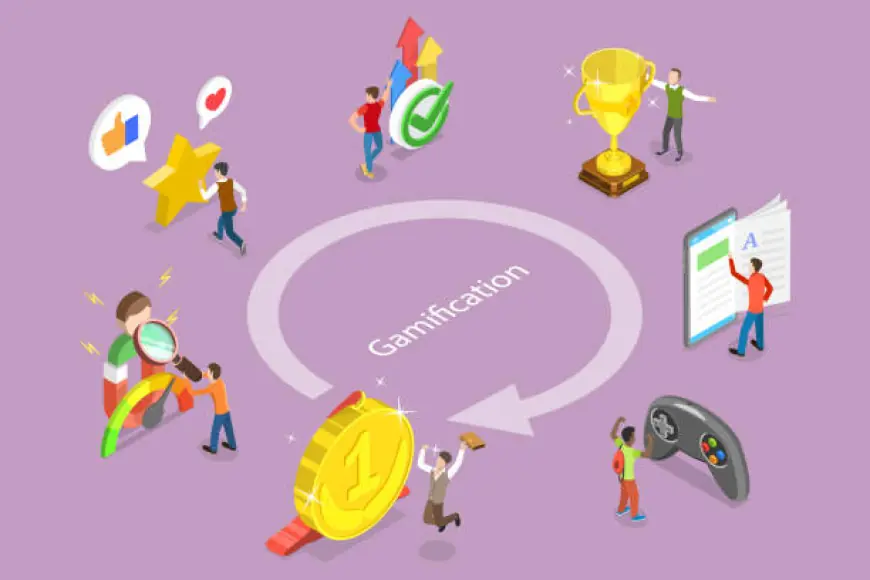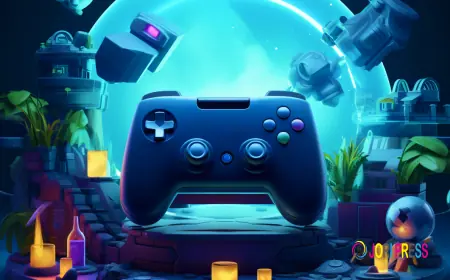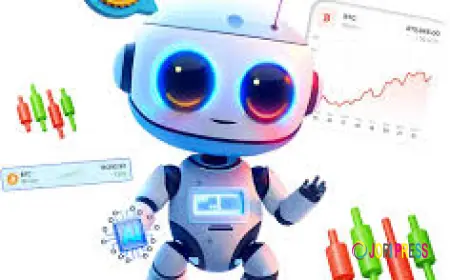Boost Engagement with a Gamification Loyalty Program
A gamification loyalty program integrates interactive game-like features into a brand’s loyalty system.

In an age where consumer attention is increasingly difficult to capture, businesses are constantly seeking creative ways to engage, retain, and delight their customers. One of the most innovative strategies to emerge in recent years is the gamification loyalty program—a concept that combines game mechanics with traditional customer loyalty initiatives to drive deeper engagement and long-term retention.
Gamification goes beyond the basic points-for-purchase model by incorporating elements such as challenges, badges, leaderboards, and rewards for completing non-transactional actions. These features not only encourage repeat behavior but also tap into the customer’s intrinsic motivation for recognition, achievement, and fun.
What is a Gamification Loyalty Program?
A gamification loyalty program integrates interactive game-like features into a brand’s loyalty system. Instead of simply earning points for purchases, customers can engage in missions, complete tasks, reach milestones, unlock levels, or compete on leaderboards—all while earning rewards.
Gamified loyalty programs are designed to make brand interactions more engaging and immersive. They create a sense of progress and achievement, making the customer journey feel less transactional and more experiential.
Why Gamification Works in Loyalty
The psychology behind gamification is rooted in behavioral science. Humans are wired to respond positively to goals, feedback, rewards, and a sense of progress. By adding these dynamics to a loyalty program, brands can boost engagement, encourage frequent interaction, and cultivate emotional connections with customers.
Key benefits include:
-
Increased Customer Engagement: Gamification makes interactions fun, encouraging customers to return more often.
-
Stronger Emotional Connection: Customers feel more connected to a brand that entertains and rewards them.
-
Improved Retention: With ongoing challenges and dynamic rewards, customers have a reason to stay engaged over time.
-
Behavioral Insights: Track user actions, preferences, and responses to better personalize future campaigns.
Many top-performing businesses have discovered the potential to Leverage Gamification to not only engage users but also collect valuable data on behavior patterns and preferences.
Key Elements of a Gamification Loyalty Program
1. Points and Progression
Customers earn points not just for purchases but for completing tasks like sharing on social media, writing reviews, or referring friends. These points unlock rewards, badges, or higher tiers within the loyalty program.
2. Challenges and Missions
These are time-bound or goal-specific activities that encourage repeat behavior. For example, a brand might challenge customers to shop five times in a month or try a new product line.
3. Badges and Achievements
Recognizing milestones such as a first purchase, a streak of weekly visits, or social shares gives customers a sense of accomplishment and status.
4. Leaderboards
A leaderboard shows top users based on engagement, purchases, or other metrics. This introduces friendly competition and motivates users to climb higher by engaging more frequently.
5. Levels and Tiers
As customers accumulate points or complete challenges, they progress through different levels or tiers. Higher levels can unlock exclusive benefits, early access to products, or better rewards.
Best Platforms for Gamified Loyalty Programs
Many loyalty platforms now offer built-in gamification features, or the ability to customize them through integrations. Here are a few standout options:
1. Smile.io
Offers customizable points, VIP programs, and rewards. It also supports integrations with Shopify, BigCommerce, and WooCommerce.
2. Yotpo Loyalty
This platform includes point-based rewards, referrals, and tiered loyalty systems. Gamification is available through integrations and custom workflows.
3. Antavo
Known for its deep gamification features, Antavo supports badges, challenges, contests, and real-time customer dashboards.
4. Talon.One
A promotion and loyalty engine that supports advanced campaign logic, including dynamic rewards, game-based challenges, and more.
Real-Life Example of Gamification Success
A global cosmetic brand launched a gamification loyalty program where customers could earn points for product reviews, social shares, and participating in beauty quizzes. They introduced tier-based badges like “Beauty Beginner,” “Makeup Maven,” and “Skincare Superstar.” Customers climbed tiers by completing quizzes and sharing their routines online.
As a result, the brand saw:
-
2x increase in repeat purchases
-
35% growth in user-generated content
-
40% higher engagement across email campaigns
This case underscores how gamification can create more meaningful customer experiences and stimulate multiple touchpoints across the customer journey.
Steps to Launch Your Own Gamified Loyalty Program
1. Define Goals and Metrics
Start with a clear understanding of what you want to achieve: more purchases, increased engagement, greater referrals, or better social visibility.
2. Identify Your Audience
Segment your customers and tailor your gamified experiences based on their preferences and behaviors.
3. Design the Experience
Determine what game mechanics you’ll use—badges, missions, tiers—and how they align with your customer journey.
4. Choose the Right Technology
Pick a loyalty platform that supports gamification or allows custom workflows and integrations.
5. Launch and Promote
Educate customers about the new program across your website, emails, and social media. Make onboarding intuitive and reward the first few actions quickly.
6. Analyze and Optimize
Track participation rates, user feedback, and conversion metrics. Refine your campaigns to keep them fresh and relevant.
Tips for Success
-
Keep it Simple: Don’t overwhelm users with too many features at once. Start with a few key elements and expand over time.
-
Celebrate Progress: Regularly highlight customer achievements via emails, push notifications, or in-app badges.
-
Update Regularly: Introduce new challenges, seasonal missions, and limited-time rewards to maintain interest.
-
Provide Real Value: Ensure that rewards are meaningful. Exclusive access, discounts, and early product releases work well.
Final Thoughts
A traditional loyalty program may encourage repeat business, but a gamification loyalty program adds an entirely new dimension—fun, motivation, and a sense of achievement. It transforms the customer experience from a transaction to an adventure.
As consumers seek more personalized, interactive, and rewarding experiences, gamification provides a proven strategy to keep them engaged, connected, and loyal. Whether you're a startup or an established retailer, integrating game elements into your loyalty strategy could be the next big move that sets your brand apart.
Start small, test frequently, and scale based on what resonates with your audience. With the right execution, gamification can turn ordinary customers into passionate brand champions.
What's Your Reaction?
 Like
0
Like
0
 Dislike
0
Dislike
0
 Love
0
Love
0
 Funny
0
Funny
0
 Angry
0
Angry
0
 Sad
0
Sad
0
 Wow
0
Wow
0



















































